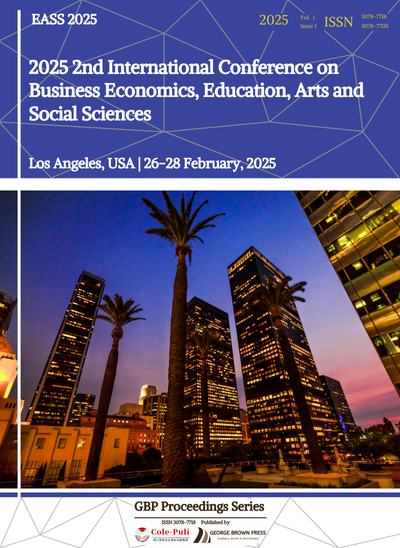Gender Mirror: The Narrative and Metaphor of Feminist Films from the Perspective of Korean Male in “The Handmaiden”
DOI:
https://doi.org/10.71222/pfj9cr93Keywords:
Korean cinema, female perspective, male gaze, gender power relations, multimodal metaphor analysiAbstract
The global feminist movement has evolved many times, from the first wave, which fought for fundamental rights, to the current fourth wave of feminism, which emphasizes diversity and inclusiveness, and which has made significant progress across the globe. However, the issue of gender equality has shown significant geographical differences across the region. As an important East Asian country, Korea's feminist movement has shown unique characteristics in the context of modernization and globalization. In this paper, we use multimodal metaphor analysis to select ‘The handmaiden’ (2016), a Korean female-themed film under the perspective of a male director, as a case study. This study aims to fill the gap in research on the application of multimodal metaphors in Korean women's perspective films and modern Korean feminist cinema, as well as to reveal the place of feminist issues in Korean film and television works in the international context.
References
1. C. J. Chen, "The difference that differences make: Asian feminism and the politics of difference," Asian J. Women’s Stud., vol. 13, no. 3, pp. 7–36, 2007, doi: 10.1080/12259276.2007.11666028.
2. N. Abelmann, "Women's class mobility and identities in South Korea: A gendered, transnational, narrative approach," J. Asian Stud., vol. 56, no. 2, pp. 398–420, 1997, doi: 10.2307/2646244.
3. G. R. Kress and T. Van Leeuwen, Multimodal Discourse: The Modes and Media of Contemporary Communication, 1st ed., London: Edward Arnold, 2001, doi: 10.2307/1512155.
4. C. Forceville, "Non-verbal and multimodal metaphor in a cognitivist framework: Agendas for research," Appl. Cogn. Linguist., vol. 1, pp. 379, 2006, doi: 10.1515/9783110215366.1.19.
5. C. Forceville and E. Urios-Aparisi, Multimodal Metaphor. Walter de Gruyter, 2009, doi: 10.1515/9783110215366.
6. E. Snow, "Theorizing the male gaze: Some problems," Representations, vol. 25, pp. 30–41, 1989, doi: 10.2307/2928465.
7. J. Kristeva, Powers of Horror: An Essay on Abjection. Columbia University Press, 2024. ISBN: 0231053479.
8. R. Connell, Gender and Power: Society, the Person and Sexual Politics, 1st ed., John Wiley & Sons, 2013. ISBN: 10.23072073932.
9. S. Elo and H. Kyngäs, "The qualitative content analysis process," J. Adv. Nurs., vol. 62, no. 1, pp. 107–115, 2008, doi: 10.1111/j.1365-2648.2007.04569.x.
10. J. Han and L. H. Ling, "Authoritarianism in the hypermasculinized state: Hybridity, patriarchy, and capitalism in Korea," Int. Stud. Q., vol. 42, no. 1, pp. 53–78, 1998, doi: 10.1111/0020-8833.00069.
11. L. Mulvey, "Visual pleasure and narrative cinema," Feminism and Film Theory, pp. 57–68. Routledge, 2013, doi: 10.36019/9780813568409-034.
12. H. J. Sohn, "Feminism reboot: Korean cinema under neoliberalism in the 21st Century," J. Jap. Korean Cinema, vol. 12, no. 2, pp. 98–109, 2020, doi:10.1080/17564905.2020.1840031.










